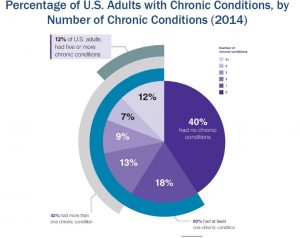
Report on Hot Car Deaths in Lakewood, New Jersey: A Sustainable Development Goals Perspective
Introduction
This report examines the tragic incidents of children dying from vehicular heatstroke in Lakewood, New Jersey, with a focus on the implications for Sustainable Development Goals (SDGs), particularly SDG 3 (Good Health and Well-being), SDG 11 (Sustainable Cities and Communities), and SDG 16 (Peace, Justice and Strong Institutions).
Background and Incident Overview
- Moshe Ehrlich, a 35-year-old father and Torah student, forgot his four-month-old son, Yeruchem Ehrlich, in a minivan on a warm day. The child became unresponsive and died due to heat exposure.
- Yeruchem Ehrlich was the first of seven children in the U.S. to die in hot cars in 2025. Another recent case occurred in Ormond Beach, Florida, involving an 18-month-old boy.
- Lakewood has experienced more hot car deaths per capita than any other U.S. community, with five children dying since 1990, exceeding totals in several entire states.
Community Context and Risk Factors
- Demographics: Approximately 70% of Lakewood’s 155,000 residents are ultra-Orthodox Jews (Haredi), representing the highest concentration outside Israel.
- Family Size: Haredi families typically have large numbers of children, averaging five or more, contributing to increased risk due to complex logistics and caregiving demands.
- Economic and Religious Practices: Mothers often work full-time while fathers attend yeshivas, resulting in children spending significant time being transported between multiple care facilities.
- Cultural Factors: Traditional clothing and social pressures, such as punctuality for religious study, may contribute to distraction and tolerance to heat, increasing risk.
Case Studies
- Moshe Ehrlich Case: On March 18, 2025, Ehrlich forgot his infant son in a car for over two hours while attending Torah study. Despite precautions, the tragedy occurred due to a combination of logistical complexity and communication gaps.
- Avraham Chaitovsky Case: In July 2024, Chaitovsky left his eight-week-old daughter in a car for over four hours while attending yeshiva. The infant died from heatstroke, and the father faces legal charges.
- Additional Cases: Other families in Lakewood have experienced similar tragedies, with some cases dating back to 1998 and 2004.
Implications for Sustainable Development Goals
- SDG 3: Good Health and Well-being
- Preventing child deaths from heatstroke aligns with the goal of reducing preventable mortality and promoting health and safety for all ages.
- Community education and health interventions are critical to address this preventable cause of death.
- SDG 11: Sustainable Cities and Communities
- Lakewood’s unique demographic and social structure requires tailored urban planning and community support services to reduce risks associated with childcare logistics.
- Improving transportation safety and childcare accessibility can mitigate risks for vulnerable populations.
- SDG 16: Peace, Justice and Strong Institutions
- Transparency and accountability in reporting and addressing hot car deaths are essential to build trust and support affected families.
- Engagement of civic, religious, and community leaders is necessary to foster open dialogue and preventive measures.
Challenges and Community Response
- Families affected by hot car deaths often experience intense guilt and social stigma, leading to silence and reluctance to discuss incidents publicly.
- Local leaders and institutions have largely remained silent, limiting community awareness and prevention efforts.
- Paramedics and emergency responders report multiple close calls annually, indicating an ongoing risk.
Recommendations
- Enhance Community Awareness: Implement culturally sensitive education programs about the dangers of leaving children unattended in vehicles.
- Improve Childcare Logistics: Support families with large numbers of children through coordinated transportation and childcare services.
- Engage Religious and Civic Leaders: Encourage open communication and leadership involvement to reduce stigma and promote preventive actions.
- Strengthen Legal and Support Frameworks: Provide support for affected families and ensure transparent legal processes to uphold justice and community trust.
- Integrate SDG Principles: Align local policies with SDG targets to promote health, safety, and inclusive community development.
Conclusion
The high incidence of hot car deaths in Lakewood, New Jersey, highlights critical intersections between cultural practices, family dynamics, and community infrastructure. Addressing this issue through the lens of the Sustainable Development Goals offers a pathway to enhance child safety, promote well-being, and strengthen community resilience. Collaborative efforts among families, community leaders, health professionals, and policymakers are essential to prevent further tragedies and support sustainable development in Lakewood and similar communities.
1. Sustainable Development Goals (SDGs) Addressed or Connected
- SDG 3: Good Health and Well-being
- The article highlights child fatalities due to heatstroke in cars, directly relating to child health and safety.
- It addresses preventable deaths and the need for improved child welfare and safety measures.
- SDG 11: Sustainable Cities and Communities
- Focus on the community of Lakewood, New Jersey, and the social dynamics contributing to the issue.
- Issues of community safety, emergency response, and social support systems are implied.
- SDG 16: Peace, Justice and Strong Institutions
- The article discusses legal consequences and community transparency regarding child endangerment cases.
- It touches on justice system responses and community governance.
2. Specific Targets Under Those SDGs Identified
- SDG 3 Targets
- Target 3.2: End preventable deaths of newborns and children under 5 years of age.
- Target 3.4: Reduce premature mortality from non-communicable diseases and promote mental health and well-being, which can be extended to include prevention of accidental deaths.
- SDG 11 Targets
- Target 11.7: Provide universal access to safe, inclusive and accessible green and public spaces, which relates to community safety and child-friendly environments.
- Target 11.3: Enhance inclusive and sustainable urbanization and capacity for participatory, integrated and sustainable human settlement planning and management.
- SDG 16 Targets
- Target 16.6: Develop effective, accountable and transparent institutions at all levels.
- Target 16.3: Promote the rule of law at the national and international levels and ensure equal access to justice for all.
3. Indicators Mentioned or Implied to Measure Progress
- SDG 3 Indicators
- Under-5 mortality rate due to accidental causes such as vehicular heatstroke.
- Number of child fatalities from preventable causes.
- Incidence of emergency calls and responses related to child safety in vehicles.
- SDG 11 Indicators
- Community-level data on incidents of child endangerment and safety hazards.
- Availability and accessibility of child care and educational facilities.
- Measures of community awareness and prevention programs effectiveness.
- SDG 16 Indicators
- Number and outcomes of legal cases related to child welfare and endangerment.
- Transparency and responsiveness of local government and community institutions regarding public safety issues.
- Community reporting and data availability on child safety incidents.
4. Table of SDGs, Targets, and Indicators
| SDGs | Targets | Indicators |
|---|---|---|
| SDG 3: Good Health and Well-being |
|
|
| SDG 11: Sustainable Cities and Communities |
|
|
| SDG 16: Peace, Justice and Strong Institutions |
|
|
Source: dailymail.co.uk







